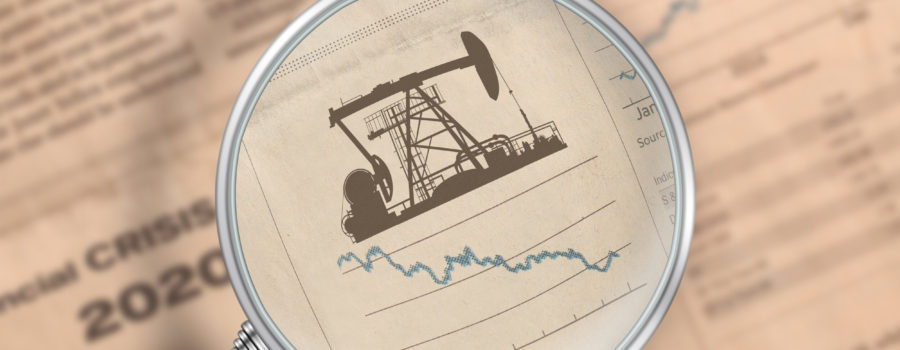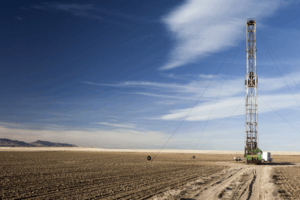Wait, crude oil prices are jumping up again?

Investors continue to be increasingly “bullish” (optimistic) as many of the world’s biggest economies come back online (China, Germany, U.S.), as U.S. producers hit the brakes faster than expected, and as OPEC+ delivers on production cuts (the “plus” part of OPEC+ includes Russia and other key exporters).
“The actual production cuts are deeper and more spectacular than any reasonable person would have thought a week ago.” -Ed Morse, head of commodities research at Citigroup on OPEC+ cuts
Despite optimism, there is still quite a bit of concern the market jumping ahead of the facts and rebounding too fast, projecting a swifter economy recovery than actual.
Will this make gasoline prices go up even more?
Gasoline prices typically follow crude oil with about a one week delay, so expect to see an increase if this is sustained. Without any other outside factors, a $10/bbl increase in crude prices should equate to $0.24/gal (42 gallons in an oil barrel), so if crude were to hang in there at $32 we should see roughly 18 cents more at the pump by this time next week. Local supply and demand in your area could cause more or less increase, as lower-supply areas (like the only gas station on a long stretch of highway) are faster to rise and slower to fall (because they can).
Expect 15-20 cents more for a gallon of gasoline next week if crude prices hang in there around $32/bbl
Is gasoline the main product of crude oil?

Yes and no. Gasoline has the biggest share, but doesn’t even account for half the country’s crude oil products. Gasoline makes up only 45% of US crude oil consumption.
Though gasoline demand is on the rise, jet fuels and distillates (diesel fuel and heating oil) are still waiting for demand to return. TSA is reporting only 10% of travelers through checkpoints versus this time last year with less than 50% flights from only four months ago.
It will be interesting to watch is how the current imbalance of demand affect individual product prices. Refiners maximizing gasoline production and trying to predict each product’s rate of recovery could cause hiccups in supply and demand (aka, price volatility) as each product recovers on its own timeline. Following the status quo is out the window (for now), and predicting nationwide market demand is nearly impossible without precedent.
How is COVID-19 affecting natural gas?

Although natural gas demand is down roughly 5% due to COVID-19 effects, the shut-in of US oil producing wells has resulted in a reduced supply of associated gas, which helps maintain prices. Not quite as much reduced supply as hoped, but still a reduction.
Natural gas is primarily tied to weather patterns as a majority of US gas is used for heating, and a milder than average weather pattern resulted in more produced gas being stored away than usual this week. However there’s still plenty of US storage available with 43% remaining of total capacity.
How much has oil & gas activity slowed down?

Dramatically, but some areas are hit harder than others.
US rig count is down to 339 rigs versus 987 a year ago (a 66% reduction), and US shut-in production should reach 2 million barrels by June.
Though the Permian Basin can boast the hardest hit in terms of total barrels reduced (down 463,000 bbls a day since February), the Bakken in North Dakota is taking the biggest overall beating. The basin is down a whopping 24% in oil production and 72% less rig activity since February, with only 15 rigs remaining drilling. Anadarko and Eagle Ford are close behind in similar metrics. (Appalachia and Haynesville are primarily natural gas plays rather than crude oil plays).
The takeaway? While companies have developed oil-rich shales outside the Permian for the last decade, those areas still struggle to compete without a higher price environment. The Permian is still the dominant area for US onshore oil production and is only down 10% production. It may be down 58% in rig activity, but that’s still 170 rigs. If you own acreage in the Permian, it’s best positioned to hold its value through this downturn even if shale across the country struggles. Outside the Permian, investors are likely to be looking for producing wells or chapter 11 bargains rather than drilling new wells.

Of course, the balance sheet of certain operators in the Permian is a different story. Astronomical acquisition costs (the price investors have paid to ante up and play the game) and production bottlenecks have made for slim margins for many operators who may not be able to survive extended downturns. The longer prices stay low, the more likely it is for these assets to fall to new investors who can reset at a lower price point.
One potential outcome being monitored is the interest Chinese investors are showing in US energy assets which could become an issue of national security if allowed to happen at scale.
“I don’t want to wind up five years from now with, all of a sudden, some foreign country shutting down production in Texas because they own it, and prefer buying from their own reserves overseas. I think that would be inefficient use, and I would think it would threaten national security.” – Wayne Christian, Texas Railroad Commissioner









